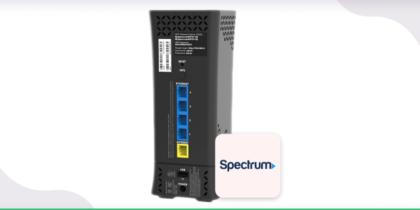Table of Contents
Juice jacking has been around for years, and it’s not a myth but rather a real threat to your cyber security. It is also known as app-jacking and app-rushing. This guide explains everything you need to know about Juice Jacking.
What is juice jacking?
It is a form of cyberattack in which hackers try to steal your data by tricking you into downloading malicious mobile apps. It usually happens in public places where mobile devices are charged, such as airports, cafes, or hotels using jacking devices or jacking cables.
With juice jacking, cybercriminals can steal your data and even install malware on your smartphone. In addition, they can also gain control of the device and use it for DDoS attacks or other malicious purposes.
How is juice jacking a threat to cybersecurity?
Juice jacking attacks are gaining popularity and are a significant threat to cybersecurity as they are easy to carry out and difficult to detect. People are unaware of jacking in public; they never hesitate to use public charging devices or USB ports when they run out of battery, having no backup. Due to this negligence, hackers have become more active in executing malicious actions.
Hackers create jacking hardware explicitly designed for juice jacking, which allows them to insert it into any standard USB port or socket without having any physical contact with the device itself. It makes it easy for them to target multiple devices at once without arousing suspicion or being caught in the act.
How does it occur?
Juice jacking used to be unheard of until recently when several cases were reported around the world involving juice jacking attacks. A relevant case occurred in March 2019 at the JFK International Airport in New York City when a man stole $500 from an unsuspecting traveler who was charging his phone at an outlet in the airport’s terminal 4.
The wireless intrusion uses wireless signals to steal information from your device and send it back to the hacker’s computer. This process can be done in two ways:
- By using a WiFi hotspot (e.g., at an airport) or Bluetooth connection (e.g., at home), which allows hackers to access your data without needing physical access to you or your device; and
- By physically connecting their device with yours via USB cable (e.g., at an airport).
Risk involved in juice jacking
The risk of juice jacking includes hacking without even knowing it. While you’re charging your device, someone can easily plug in the device and gain access to your information.
Juice jacking is similar to WiFi hacking, but instead of accessing your WiFi network, they will access your data directly from your device’s port. The attacker’s device would need to be plugged into an outlet near yours for this attack to work, but it could happen at any time during charging – even if you’ve only just started charging your phone or tablet!
Security researchers at Avast coined the term juice jacking after discovering that malware could be installed on a smartphone or tablet by hackers who could access the USB port of a device while it was being charged.
Once it is done, hackers can then use their access to gain control of the device, stealing any data stored on it or sending files elsewhere without the victim knowing.
The researchers conducted tests on various devices, including smartphones, tablets, laptops, and desktops, testing them with different chargers before finding that several were vulnerable to this attack. They also found that many devices allowed unrestricted access from any computer when connected via USB cable. It reveals that even if you have secure passwords for your device itself, these could be bypassed when someone gains control over your charging cable.
What happens when you become a juice jacking victim? How can you overcome the threat?
Juice jacking is a type of man-in-the-middle or phishing attack. It works by taking advantage of the fact that people like free things, and it’s also a way to gain access to your personal information.
It can affect anyone using an iPhone or an Android device. It’s not limited to just those people – anyone who uses these services could be at risk of having their account hacked. While accessing your account, they can send messages from your phone number, change your password and even get access to files stored in iCloud Drive or Google Drive storage accounts.
How to avoid juice jacking
The main concern is How to avoid juice jacking after being trapped in such a situation.
If you are facing the same thing, here are some steps you can take to avoid your iPhone jacking or any other device used for storing personal information.
- Immediately disconnect your device from the charger and remove the battery if possible.
- Allow an antivirus scan on your device.
- Change all passwords.
- Update the operating system.
- Install anti-malware software for mobile devices.
- If you use public charging stations regularly, consider using a protective case that has a built-in locking mechanism.
- Always keep your devices charged
- Consider installing a third-party charger that doesn’t have an outlet or USB port.



